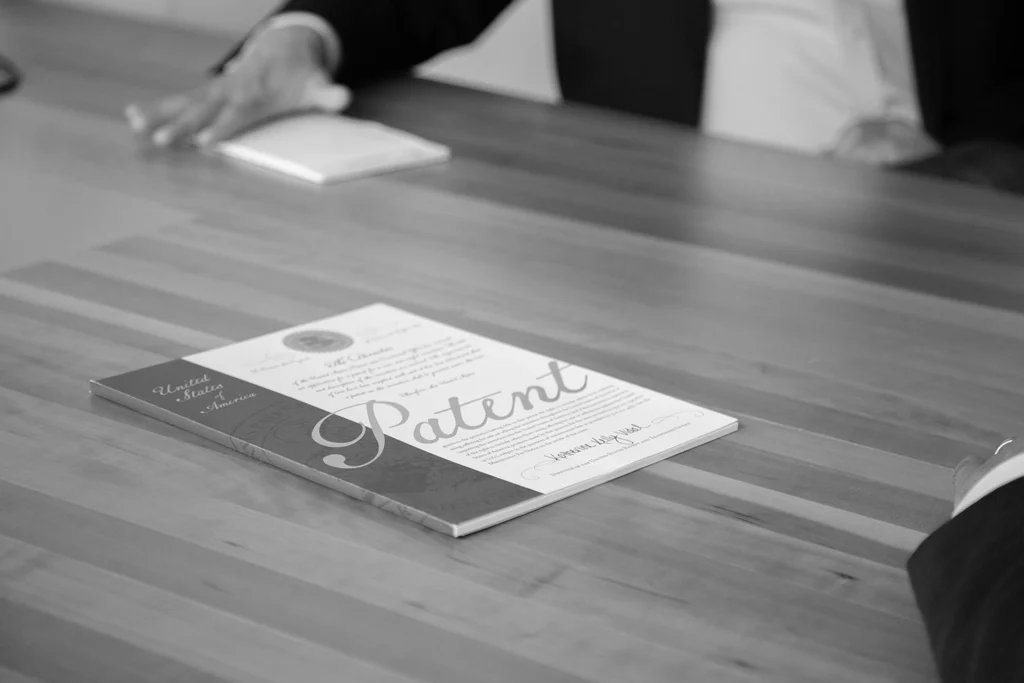When most people think about design patents, they think of consumer products, such as furniture, footwear, toys, car designs, and packaging. However, today, industries such as medical technology, electronics and software are utilizing design patents to add additional layers of IP protection to their products. In fact, designs in the graphical user interface and user experience space are the fastest growing area of design applications filed at the US Patent & Trademark Office.
Form + Function
Design patents are particularly well-suited to protect iconic features of a product that consumers immediately associate with a particular brand. A design patent protects the aesthetic or ornamental features of an invention. Unlike a utility patent, it does not pertain to the mechanics or underlying use of an invention although, the claimed design still must have an underlying function (i.e., can’t simply be a piece of artwork). The design application must show that the specific design is critical to the function and the design must be new and unobvious in comparison to previously publicly available designs or “prior art.” Design patent applications are rarely rejected based on the prior art.

Design Patent Basics
The grant rate for design patent applications is around 90%. On average it only takes 15-18 months from filing to get a design patent application approved, compared to the 3-5 years required of utility patents. Further, design patents typically run a fraction of the cost of utility patents to prepare. Applicants should, however, be aware that the patent office can be very picky about drawings. Amending the drawings of a design application can be difficult, if not impossible after filing. For that reason, it is critical that the drawings meet all of the requirements on the first go-round.
In the United States, design patents are afforded a 12-month grace period, meaning that if you wish to seek patent protection, you must file an application within a year of the first public disclosure. Design patents may not claim priority to a provisional application; however, it is possible to file a design patent as a continuation of the utility or PCT application, provided that no new matter is added. The deadline for foreign priority is six-months from the date of filing. In many countries, such as the United States, applications for design patents are kept secret until they are granted (i.e., design patent applications are not published prior to issuance).The design patent term is 15 years from the date of grant. No maintenance fees are required for design patents.
Enforcement
A design patent can serve as a significant deterrent to potential copiers with the potential for large damage awards if you are the one enforcing. In particular, US statutes enable owners of design patents to recover total profits from a competitor’s infringing design. There is also an inherent subjective component to design patent infringement analysis that can be unnerving to potential infringers. The test for design patent infringement is whether an “ordinary observer,” giving the same level of attention as a purchaser usually gives, would find that the overall appearance of the design patent and the alleged infringing article are “substantially the same.” Gorham Co. v. White, 81 US 511 (1871). As a result, most design patent infringement cases are settled out of court, thereby avoiding the large costs typically associated with patent litigation.
Patent practitioners have increasingly embraced and become more creative with the use of design patents. To understand if design patents should be utilized to bolster your portfolio, contact your Patterson Thuente IP attorney.
Chris Hansen is a patent attorney with Patterson Thuente IP who handles patent preparation and prosecution for clients a variety of industries. Chris has significant experience advising clients with respect to design patent protection. Contact him for more information at 612.349.30.19 / hansen@ptslaw.com.

